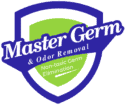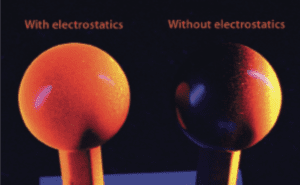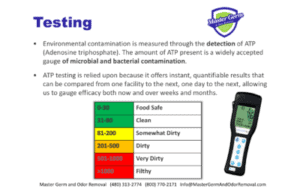Clean, Disinfect, Sanitize. What’s the Difference?
What is the difference between cleaning, disinfecting, and sanitizing?
Our friends at Victory Innovations Co. have a great post about the differences here.
Cleaning
Cleaning is removing visible dirt and debris. We use a phenomenal cleaner/degreaser, but for clients and school districts needing to save money, I encourage them to use a drop or two of Dawn Dishwashing Liquid per 8 oz of water in a spray bottle. Easy, right?
Cleaning is important to do prior to application of an antimicrobial, long-lasting germ shield. A germ shield creates a permanent bond with the surface upon which applied, meaning it will bond permanently with debris or your desktop, oily fingerprints or your wall, bread crumbs or your kitchen counter. Obviously, applying nano-technology germ shield to bread crumbs and debris makes them the highest-tech bread crumbs and debris in the world. Dust bunnies are the same–no need to give them world-class nano-tech.
Disinfecting
Disinfecting is what we achieve every time. We want to inactivate viruses, bacteria, mold, mildew, and allergens since all negatively impact our health.
Most companies focus their disinfection service efforts on high-touch surfaces–door knobs, light switches, phones and keyboards, armrests on office chairs, elevator buttons, faucets and soap dispensers. These are all important, but many disinfecting businesses ONLY do high-touch surfaces. Some add in medium-touch surfaces such as the seat of a chair. We go the extra mile…
Our approach is to treat the entire building envelope. Because our non-toxic disinfectant is very long lasting with an EPA-rating of up to 90 days, we treat EVERYTHING from the ceiling to the walls and windows to the entire desk/chair/cubicle to the floors. Friction is the enemy to an anti-viral, anti-bacterial germ shield, so when we apply to the ceilings and walls, we’re greatly increasing the surface area of the massive latticework of nano-spikes that attract and rupture the cell wall of pathogens.
It makes sense to apply a germ shield to the walls and ceilings and the entire building envelope because every surface will attract and neutralize pathogens. The entire building envelope is unified in the battle against airborne pathogens and allergens, and surfaces become inhospitable to pathogens. We also like to treat the HVAC ductwork and air filters for the climate control system. While not an actual air scrubber, this can have a tremendous effect of reducing airborne pathogens and allergens.
Sanitizing
Sanitizing is all about turning up the heat! Your dishwasher sanitizes stuff–it reduces the bacterial load on a surface, such as a plate, hopefully eliminating 99.9% of bacteria, but it is not always effective against viruses or fungi. This is the reason your washer can get funky inside, even when used regularly; it simply does not kill the fungi.
Our laundry machine has a sanitize mode–it heats WAY up to kill bacteria. Our laundry machine still gets mildewy inside if not properly cleaned and disinfected, even with a sanitizing mode. It’s always disappointing that this doesn’t kill everything bad and scrub the outer drum, but it only sanitizes. It does not clean or disinfect. We use a disinfectant to kill the fungi and mildew in the machine from time to time, because sanitizing and disinfecting are two different things.
We would love to help at your facility! No school district is too big, no home is too small!





